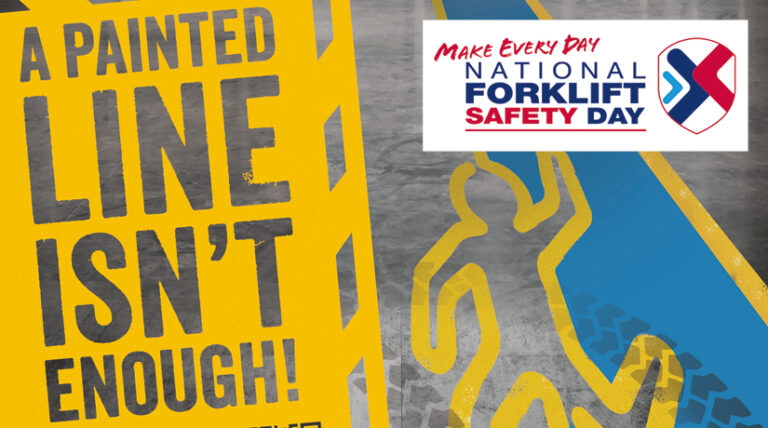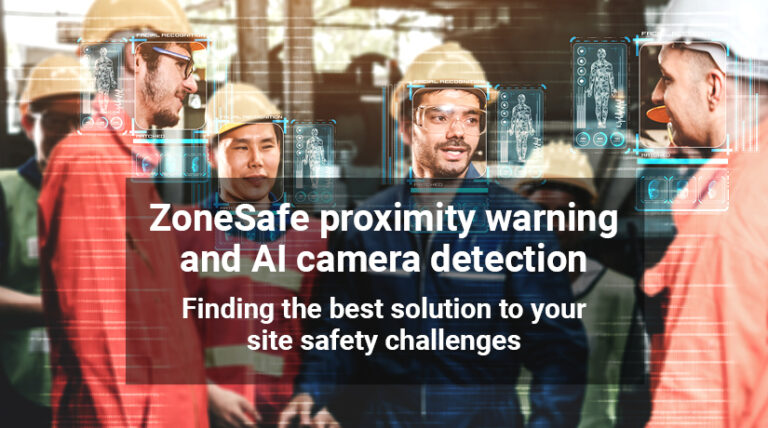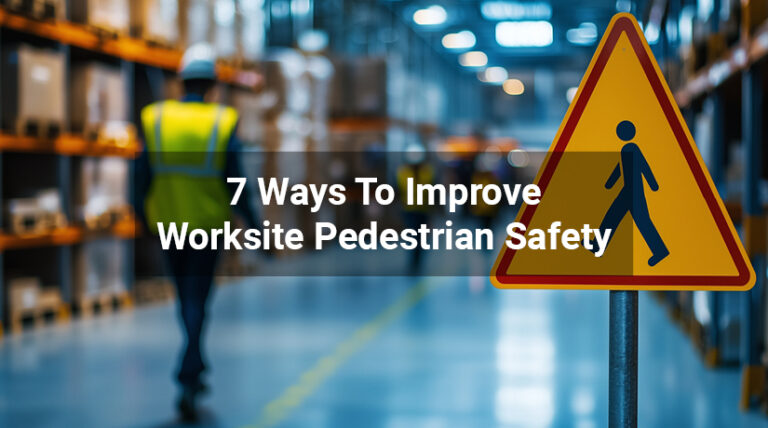Pedestrian accidents in the workplace occur all too often.
Accident prevention can come at a cost. But the cost of pedestrian accidents at work can be more costly – even devastating to the business.
While providing safety systems for many industries, we have found that the cost of pedestrian accidents can massively outweigh the cost of prevention.
So what do accidents cost your company?
Industrial vehicles used in the workplace always carry a certain level of risk, whether that is a forklift, a shovel loader or a large reachstacker. Damages caused by these vehicles can be easily resolved by repairing or replacing equipment, which tends to be a fixed cost.
Workplace injuries, however, create a financial ripple effect. This goes well beyond medical expenses and can cost any company valuable time and money.
Data shows that the average work-related injury cost between £100,000 and £150,000. £100,000 of that amount comes from indirect costs.
What are direct and indirect costs?
Direct costs are expenses covered by insurances in place, and are directly related to incidents in the workplace. These can be workers’ compensation premiums and medical charges, emergency services and future medical costs. These are DIRECTLY linked to the accident.
Indirect costs are not as apparent. They can build over time after the accident, and while not large to begin with, they can become out of hand – burning a hole in your company’s pocket. Some of the costs that can outnumber direct costs can be costs for the investigation of the accident, schedule/programme delays, running costs, legal fees, training costs for new and replacement workers, damaged tools and equipment, and not forgetting staff absenteeism.
A further look into these costs:
Damage repairs and replacements
The vehicles themselves can cost a lot to be repaired, and most industrial vehicles are a large investment for any business. If one is involved in an accident – or written off – it can be disastrous for the business as it may need to be written off or has to undergo significant repairs. This can add up to a hefty fee.
These damages and costs also are not limited to the industrial vehicles. The smallest vehicles are forklifts; all others are heavy vehicles – so a crash can cause substantial damage to other machinery, equipment, goods and even the structure of your property.
Compensation for employees
If a member of staff is injured in a work-related accident, it is the employer’s responsibility to cover any medical expenses. The cost of industrial accidents involving vehicles and pedestrians can cost as much as £30,000 in direct costs per injured worker.
Loss of profits from loss of production
Loss of productivity due to absent workers cost employers an average of £200 billion each year. This is about £1,000 per employee. Accidents involving industrial vehicles do not only involve loss of productivity form the injured worker, but also medical expense coverage, equipment and an industrial vehicle out of active duty. This can also include calculating the cost of management time spent looking into the injured worker case, investigating the accident, and supervising the tasks needed to get the go-ahead to resume daily work.
Legal costs and fines
The HSE (Health and Safety Executive) requires that employers provide a safe and hazard-free working environment. If there are found to be breaches of the Health and Safety at Work Act 1974, there can be serious consequences for the employer. For example, for offences committed before 16th January 2009, the maximum sentence for failing to discharge a duty under sections 2 to 6 of the act carried a maximum penalty in the magistrates’ court of £20,000; and in the Crown Court – UNLIMITED.
Loss of staff
A lack of safety in the workplace can also lead to other problems; a reduction in staff morale and stress among employees can occur. If a workplace holds no regards for its safety and its staff, this has a negative impact on the staff. If workplace accidents have occurred, fear may spread among the employees, which can lead employees to seek new employment. The average cost to replace personnel costs an average of £30,000. When the organisation is relatively small, the loss of key workers can make it very difficult to meet contract deadlines. This failure to complete projects can ruin a business – or tarnish a business’ reputation, leading to the closure of a company.
How can you prevent these failures?
Prevention is the key to stop any of these. You can prevent any of these costs (which can be ongoing) by putting preventions in place:
Reduce pedestrian accidents with training
One effective way to prevent these costs is to enforce a strict protocol for health and safety. In the case of forklifts, all operators should complete forklift operator training and refresher training. Employers should ensure that workers are properly trained before they are allowed to operate forklifts. This helps to reduce accidents caused by careless manoeuvres of forklifts. An untrained forklift driver is as dangerous as an unlicensed motor vehicle driver.
Check on machinery
Industrial vehicle operators are required to perform regular check-ups on the forklifts, including inspecting the forklifts before they start using them, every day. They should check on seat belts, brakes, fluid levels, tires, horn, lights and moving parts – to check if they are all functioning as they should be.
Barriers
A simple solution is safety barriers. These can prevent entry of forklifts and other vehicles, allowing your business to protect hazardous or vulnerable areas, making areas safer for pedestrians. They’re easy to install, and are a simple way to segregate vehicles and pedestrians. A-Safe provide great barriers.
Safety lights
Safety lights – usually blue – are attached to the vehicle’s roof frame, projecting a blue warning spot onto the ground. This warns pedestrians and other forklift drivers of approaching trucks. This is great in poorly-lit areas, as the blue spotlight is bright enough to see for long distances.
Segregation
Pedestrian segregation in the workplace is important for reducing risk on sites wherever vehicles work in close proximity with pedestrians.
While introducing speed limits on site can help to reduce the risk of accidents, the most simple and effective way for companies to protect their staff is to physically separate pedestrian routes from vehicle traffic routes.
There are several ways that you can achieve this – from barriers and raised kerbs to LED lighting and traffic lights.
But what happens if you can’t physically segregate? If there are obstructions (racking, shelving, assets and other vehicles, etc.) then the above solutions won’t be effective. The price is irrelevant, as pedestrians will still be in danger.
ZoneSafe has the answer – it does not require line-of-sight and obstructions aren’t an issue. And the cost of installing the system (the prevention) is far better than the ongoing costs of pedestrian accidents.
Find out more at www.zonesafe.net




